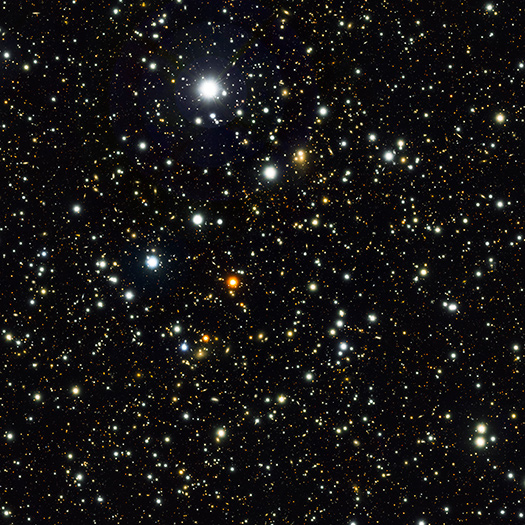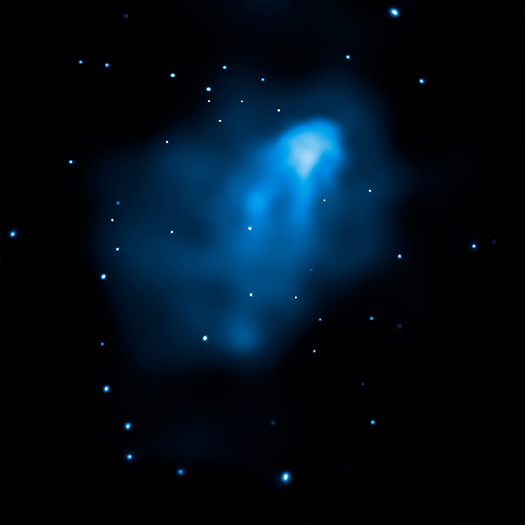

This discovery solves a long-standing mystery in galaxy cluster research about the origin of beautiful swirls of radio emission stretching for millions of light years, detected in Abell 3411 and Abell 3412 with the GMRT. New Exhibit Launches to Celebrate the International Year of Light "These particles are among the most energetic particles observed in the Universe, thanks to the double injection of energy."

"It's almost like launching a rocket into low-Earth orbit and then getting shot out of the Solar System by a second rocket blast," said co-author Felipe Andrade-Santos, also of the CfA. Then, these accelerated particles in the jet were accelerated again when they encountered colossal shock waves - cosmic versions of sonic booms generated by supersonic aircraft - produced by the collision of the massive gas clouds associated with the galaxy clusters. The powerful electromagnetic fields associated with this structure have accelerated some of the inflowing gas away from the vicinity of the black hole in the form of an energetic, high-speed jet. Optical data from the Keck Observatory and Japan's Subaru telescope, both on Mauna Kea, Hawaii, detected the galaxies in each cluster.įirst, at least one spinning, supermassive black hole in one of the galaxy clusters produced a rotating, tightly-wound magnetic funnel. The comet-shaped appearance of the X-rays detected by Chandra is produced by hot gas from one cluster plowing through the hot gas of the other cluster. The two clusters are both very massive, each weighing about a quadrillion - or a million billion - times the mass of the Sun.

This cosmic double whammy is found in a pair of colliding galaxy clusters called Abell 3411 and Abell 3412 located about two billion light years from Earth. "This is the first time, however, that we seen them clearly linked together in the same system." "We have seen each of these spectacular phenomena separately in many places," said Reinout van Weeren of the Harvard-Smithsonian Center for Astrophysics (CfA) in Cambridge, Mass., who led the study that appears in the inaugural issue of the journal Nature Astronomy. Jansky Very Large Array, and other telescopes, researchers have found out what happens when matter ejected by a giant black hole is swept up in the merger of two enormous galaxy clusters. Two of the most powerful phenomena in the Universe, a supermassive black hole, and the collision of giant galaxy clusters, have combined to create a stupendous cosmic particle accelerator.īy combining data from NASA's Chandra X-ray Observatory, the Giant Metrewave Radio Telescope (GMRT) in India, the NSF's Karl G. van Weeren et al Optical: NAOJ/Subaru Īstronomers have discovered a cosmic one-two punch unlike any ever seen before.


 0 kommentar(er)
0 kommentar(er)
